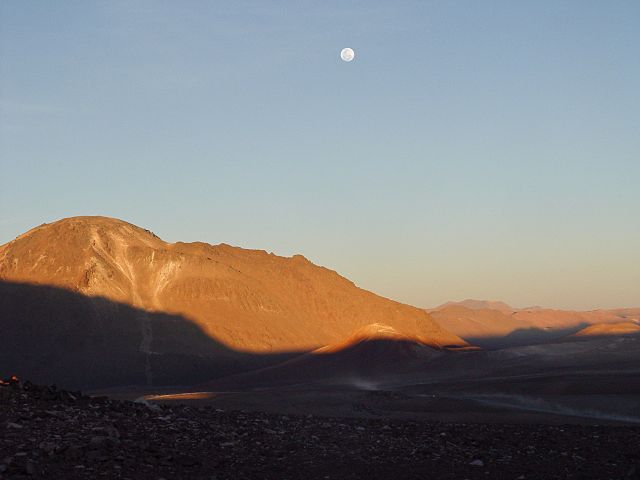University of Tokyo Atacama Observatory
The University of Tokyo Atacama Observatory (TAO) is an astronomical observatory located on the summit of Cerro Chajnantor, at an altitude of 5,640 m (18,500 ft) within a lava dome in the Atacama Desert of northern Chile. The site is located less than 5 km (3.1 mi) north-northeast of the Llano de Chajnantor Observatory, where the Atacama Large Millimeter Array (ALMA) is located, but is over 580 m (1,900 ft) higher in elevation. It is also 28 m (92 ft) higher than the Fred Young Submillimeter Telescope proposed for the same peak. The project is conducted by the School of Science, University of Tokyo. Operation began in 2024.
Looking east towards Cerro Chajnantor, site of TAO
An observatory is a location used for observing terrestrial, marine, or celestial events. Astronomy, climatology/meteorology, geophysics, oceanography and volcanology are examples of disciplines for which observatories have been constructed. Historically, observatories were as simple as containing an astronomical sextant or Stonehenge.
The Sphinx Observatory on a mountain top in the Swiss Alps at 3,571 m (11,716 ft)
Atacama Large Millimeter Array, Chile, at 5,058 m (16,594 ft)
Paranal Observatory, Chile, home of the VLT at 2,635 m (8,645 ft)
The Mauna Kea Observatories, Hawaii, home of several of the world's largest optical telescopes at 4,205 m (13,796 ft)





